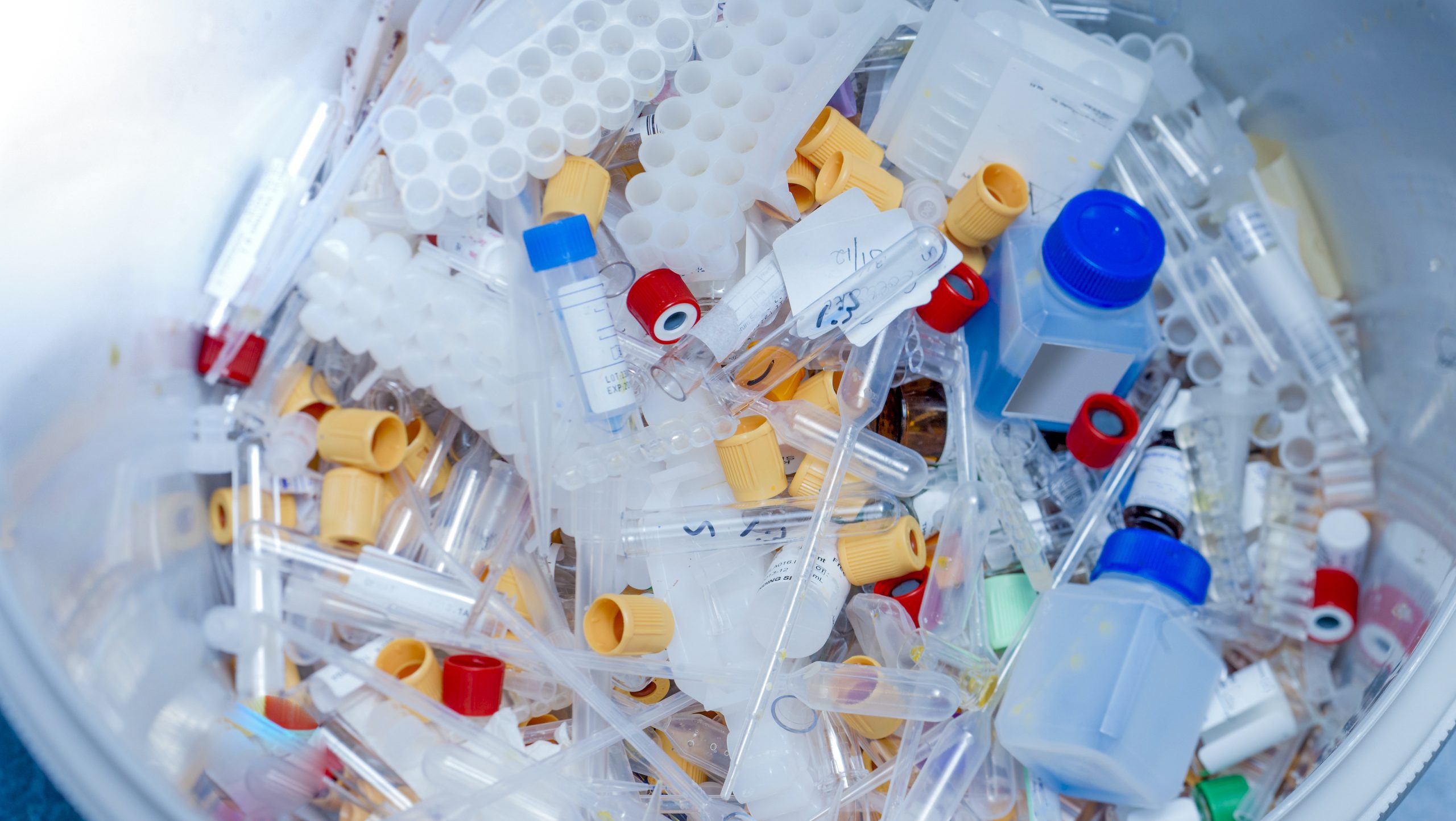Straws, cups or take-out food containers may come to mind when you think of single-use plastic products (SUPs) — used once, or for a short time, before being thrown away. However, single-use plastics reign supreme in the world of medicine. single-use tubes, syringes, catheters, lancets, bandages, gloves and gowns surround Gen Z doctors and hospital patients.
The research field also uses medical plastic for single-use items like vials and sample bags.
Proponents of single-use plastic in the healthcare system, outline their many benefits especially coming out of a pandemic. A study done on Medical Plastics reports that single-use plastics offer immense health benefits in terms of maintaining a sterile environment and thus become part of our daily lives, especially during the pandemic.
Unfortunately, the use of plastic in the medical sector creates large amounts of waste. The Washington Post reported one patient being hospitalized resulted in nearly 34 pounds of waste every day. Of that waste, up to 25% is plastic. In the United States, only around 5% of plastic waste is recycled. Given how quickly this plastic crisis is creating considerable effects, recycling is not growing fast enough to mitigate it.
UCSF medical student Talia Sole said she sees plastic everywhere, “especially at school.” “While I do think single-use plastic has an important purpose, I think we can find alternatives to it. We are no longer in a pandemic where everything is possibly contaminated, which is why I believe it is the perfect time to begin research in this field. Growing up as part of Gen Z, I have always had this fear of the doom and gloom we face as a society from climate change, and as a medical student, I want to do my part to prevent that.”
Furthermore, youth are being affected by the use of plastic in hospitals. Plastics have already been found in breast milk, infant blood, and brains, causing cancer and brain damage. Plastic is known to affect the brains and bodies of young children especially. In this way, plastic is plaguing our youth and future generations.
Thankfully, some youth are trying to protect themselves and their future. Ben Moony leads the Environmental Justice Club at Washington High School in San Francisco. “Caring for our environment is essential to me because we will have to live on this planet forever. Fear for us and the next generation is what inspired me to create the Environmental Justice Club at my school. I think single-use plastics play an important role in environmental pollution, we need to find solutions on how to reduce waste,” Moony said.
Similarly to Moody, many Millennials and Gen Z fear for their future and are trying to tackle the issue of single-use plastic to limit pollution. Innovation in the medical center is working on keeping youth safe from diseases and mitigating our footprint on the environment. Caramels and Ransford Healthcare reported that the number of patents related to medical plastic alternatives was nearly 2,000 in 2021, compared to 605 in 2015. Gen Z and Millennials have tried to take the issue into their own hands.
The effects of this surge in innovation have materialized as companies such as MedSupply have released an array of biodegradable and compostable hospital materials, including patient gowns, gloves, and bedpans. Many of these changes and innovations have come from the minds of Gen Z and Millennials.
Charlie Pound*, a high school senior at Lincoln High School in San Francisco plans to study Biomedical Engineering in college. “My goal as someone who plans to pursue a career in medicine and medical engineering is to start weaning our medical industry off the use of single-use plastic,” Pound said. “Whenever I go to a hospital, I always see so much plastic. It’s sad. Our medical industry is so reliant on a material that harms the environment, especially when there are so many alternatives.”
Others with similar ambitions as Pound have already made significant progress. Turning away from plastic in the medical sector, and using reusable alternatives has proven to be safe, eco-friendly, and even save hospitals money. Disposable plastic gowns that can be laundered and reused 75 to 100 times were found to reduce waste by 84 percent and cut greenhouse gas emissions by 66%. These gowns were also found to be clinically superior to disposable ones because they were less likely to break and tear, which increased protection for medical professionals.
With such ravaging successes, many hospitals are making the switch. UCLA Health uses 2.6 million disposable isolation gowns every year, generating more than 230 tons of landfill waste. By switching to reusable ones, it dramatically reduced waste and saved an estimated $450,000 annually.
In the future, plastic pollution is predicted to wipe out several marine and mammal species. Reducing our waste is crucial for youth, as they will be the generation dealing with the horrible effects of climate change and plastic pollution. We need young minds like Ben and Charlie to continue finding innovative solutions to the single-use plastic crisis.
*Name has been changed for privacy reasons.
Leah Mordehai (she/her) is from San Francisco and is a local youth journalist.
Edited by Nykeya Woods
